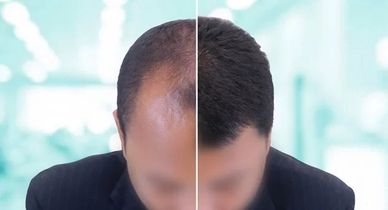What is Hair Transplantation?
How to do hair transplantation
Collecting Hair Roots with Micromotor
How to do hair transplantation

Hair transplantation is the process of transplanting strong and resistant hair taken from the back and sides of the head to the areas with hair loss. In order for the operation to be successful, the hair in the area from where the hair follicles are taken must be healthy and have sufficient density. The color of the hair strands, whether they are straight or curly, and their thickness also affect the result of the procedure.
Stages Of Hair Transplantation
Collecting Hair Roots with Micromotor
How to do hair transplantation

Shaving the hair,
- Applying local anesthesia,
- Taking hair one by one by using 0.7 mm punches through FUE method,
- Determining the front hairline,
- Taking a break for the person to eat,
- Opening micro channels in the natural direction for the hair taken,
- Placing the follicles taken into the opened micro canals,
- Dressing.
Collecting Hair Roots with Micromotor
Collecting Hair Roots with Micromotor
Collecting Hair Roots with Micromotor

Before hair transplantation, the hair strands with the highest density are removed from their roots with a micromotor for maximum efficiency and are made ready for transplantation. While doing this, hair strands with more than one root are preferred for high efficiency.
How Should The Front Hairline Be?
Process After Hair Transplantation
Collecting Hair Roots with Micromotor
One of the most important stages of a successful hair transplantation is drawing a correct front hairline. If, at this stage, the naturalness of the front hairline is not provided enough, a successful result may not occur. The person’s head structure, age and expectation, the size of the hairless area and the amount of grafts taken should definitely be taken into consideration while drawing the front hairline. Hair transplantation in the form of grass head, which you see in social life, is the result of not paying attention to these issues. The more compatible the hairline is with the head structure, the more successful the transplantation process will be. If the appropriate hairline is not drawn, it is very difficult and requires effort to reverse. Drawing the hairline too far ahead will not adapt to the changes in the person’s later ages and will not look natural. On the contrary, drawing the hairline too far back will also prevent obtaining a fully satisfactory result, so the hairline should be neither too far ahead nor too far back. These details should be explained to the person in full and the front hairline should be determined accordingly.
Adjusting Hair Density
Process After Hair Transplantation
Process After Hair Transplantation
Depending on the amount of grafts obtained from the area where hair is taken, the density in the area to be transplanted is adjusted. The amount of hair per cm² is between 80-100 grafts.
A maximum amount of 60 grafts can be transplanted per cm² with a hair transplantation operation. While the desired result is obtained with the transplantation of 25-30 grafts per cm² in some people, some people require 50-60 grafts per cm² to obtain the desired result.
While adjusting the hair density, the expectation of the person must also be taken into account and the person should be informed about how dense his hair will be. The person should form his expectation in line with this information, otherwise the person may not be satisfied with the result, no matter how successful the operation was.
Process After Hair Transplantation
Process After Hair Transplantation
Process After Hair Transplantation
AFTER 3 DAYS: The first washing of the hair is done and the washing is repeated once a day in the following period.
AFTER 10 DAYS: The scabs in the transplanted area are shed and the hairs appear like a stubbly beard.
AFTER 20 DAYS: Transplanted hairs start to fall out temporarily and this process lasts for up to three months.
AFTER 3 MONTHS: New hairs begin to grow in place of the lost hair.
AFTER 6 MONTHS: 60-70% of the transplanted hairs complete their growth.
AFTER 8 MONTHS: 80-90% of the transplanted hairs complete their growth.
AFTER 12 MONTHS: All of the transplanted hairs have grown and taken their final form.
If the transplantation area is very large, a second session should be repeated. At least 6-8 months must elapse for this. The person can go to the hairdresser 1 month after the operation, but shaving should be done with scissors and shaver without using an open razor for 6 months.”
